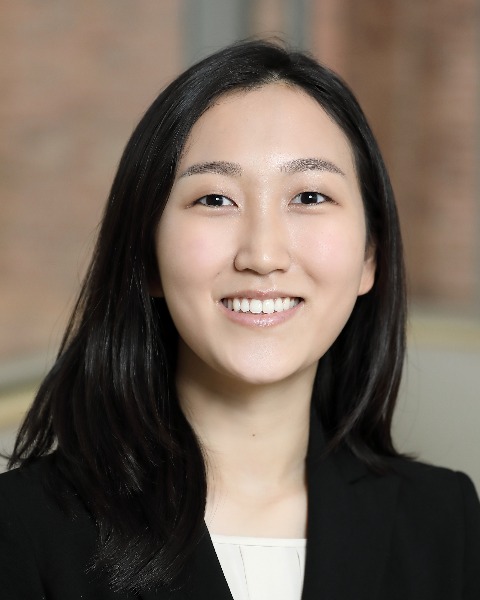Hepato-pancreato-biliary
E242: Circulating Tumor DNA in Patients Undergoing Liver Transplant for Hepatocellular Carcinoma, Cholangiocarcinoma, and Colorectal Liver Metastases

Hanna Hong, BS
Medical Student
Cleveland Clinic, United States
Hanna Hong, BS
Medical Student
Cleveland Clinic, United States
Hanna Hong, BS
Medical Student
Cleveland Clinic, United States- CW
Chase J. Wehrle, MD
Resident
Cleveland Clinic
Cleveland, Ohio, United States - SF
Sami Fares, BS
Medical Student
Cleveland Clinic, United States - HS
Henry Stitzel, BS
Medical Student
Case Western Reserve School of Medicine, United States - BE
Bassam Estfan, MD
Associate Professor, Hematology/Oncology
Cleveland Clinic, United States - SK
Suneel Kamath, MD
Associate Professor, Hematology/Oncology
Cleveland Clinic, United States - SK
Smitha Krishnamurthi, MD
Associate Professor, Hematology/Oncology
Cleveland Clinic, United States - WM
Wen Wee Ma, MD
Vice Chair, Precision Oncology; Professor of Hematology/Oncology
Cleveland Clinic, United States - MK
Mazhar Khalil, MD
Staff Surgeon
Cleveland Clinic, United States - AP
Alejandro Pita, MD
Staff Surgeon
Cleveland Clinic, United States - AS
Andrea Schlegel, MD, MPH
Professor, Liver Transplantation; Lerner Research Institute
Cleveland Clinic, United States - Jk
Jaekeun kim, MD, PhD
Professor of Surgery
Cleveland Clinic, United States - KH
Koji Hashimoto, MD/PhD
Chairman, Liver Transplantation
Cleveland Clinic, United States - RW
R Matthew Walsh, MD
Chairman, Department of Surgery
Cleveland Clinic, United States - DK
David CH Kwon, MD, PhD
Section Chief, Hepato-Pancreato-Biliary Surgery, Professor of Surgery
Cleveland Clinic, United States - FA
Federico Aucejo, MD
Director, Liver Cancer Program
Cleveland Clinic, United States
ePoster Abstract Author(s)
Submitter(s)
Author(s)
Methods:
Patients undergoing LT for HCC, CCA, or CRLM with ctDNA testing were identified from a prospective registry. CtDNA testing (Guardant 360, Reveal) was done pre-transplant post-transplant, or both (sequential) from 11/2019-09/2023.
Results:
Twenty-one patients underwent ctDNA testing and LT [for HCC (n=9; 43%), CRLM (n=7, 33%), CCA (n=4, 19%), and mixed HCC/CCA (n=1; 5%)]. Median and maximum follow up times were 15 and 124 months respectively. Median time from pre-operative testing to surgery was 57 days (IQR: 25-121), and from surgery to post-operative testing was 245 days (IQR: 60, 601). 15 (71%) patients had post-transplant ctDNA; 8 were ctDNA+ and 7 were ctDNA-. Absolute recurrence rates were 38% in ctDNA+ patients vs. 0% in ctDNA-, though this was not statistically significant (p=0.123).
Four (17%) patients (CCA=2, HCC=1, Mixed HCC/CCA=1) had recurrence. One was ctDNA+ pre-transplant and 3 were ctDNA+ post-transplant. Three (14%) patients (CCA=2, HCC=1) experienced mortality due to recurrence. All 3 patients were post-transplant ctDNA+ either at the time of or following diagnosis of recurrence.
Seven (33%) patients had sequential testing, most of whom (n=5; 71%) achieved ctDNA clearance (+/-). The remainder was ctDNA +/+ (n=1; 14%) and -/- (1; 14%). One patient had a completely novel genomic ctDNA profile post-LT (Table 1). In CCA and CRLM, a change in the most common gene alteration was observed pre- vs. post-transplant—CCA: NRAS (100%) vs. TERT (40%); CRLM: APC (18%) vs. MET (25%). In HCC, heterogeneous mutational profiles with no dominant mutations were noted pre- and post-transplant. Overall, average TMB decreased from 2.1 to 0.27 mut/Mb pre- to post-transplant.
Conclusions: ctDNA+ patients undergoing curative-intent transplant did recur at a higher rate than ctDNA-, though this initial experience was not powered to reach definitive conclusion. Concerns regarding donor-derived cell-free DNA remain of clinical relevance. Comparison of LT ctDNA pre- and post-transplant may be of benefit in transplant patients using tissue agnostic assays. Larger scale studies and serial monitoring are needed to further investigate the utility of ctDNA in surveilling recurrence.
Learning Objectives:
- Upon completion, participant will be able to understand how ctDNA can be used in the setting of liver transplant.
- Upon completion, participant will be able to interpret mutational changes using ctDNA following operations.
- Upon completion, participant will be able to correlate ctDNA findings with recurrence.
